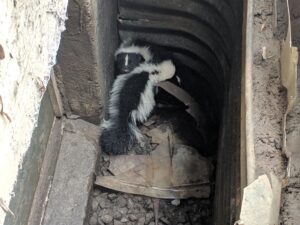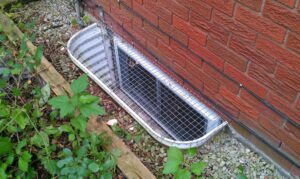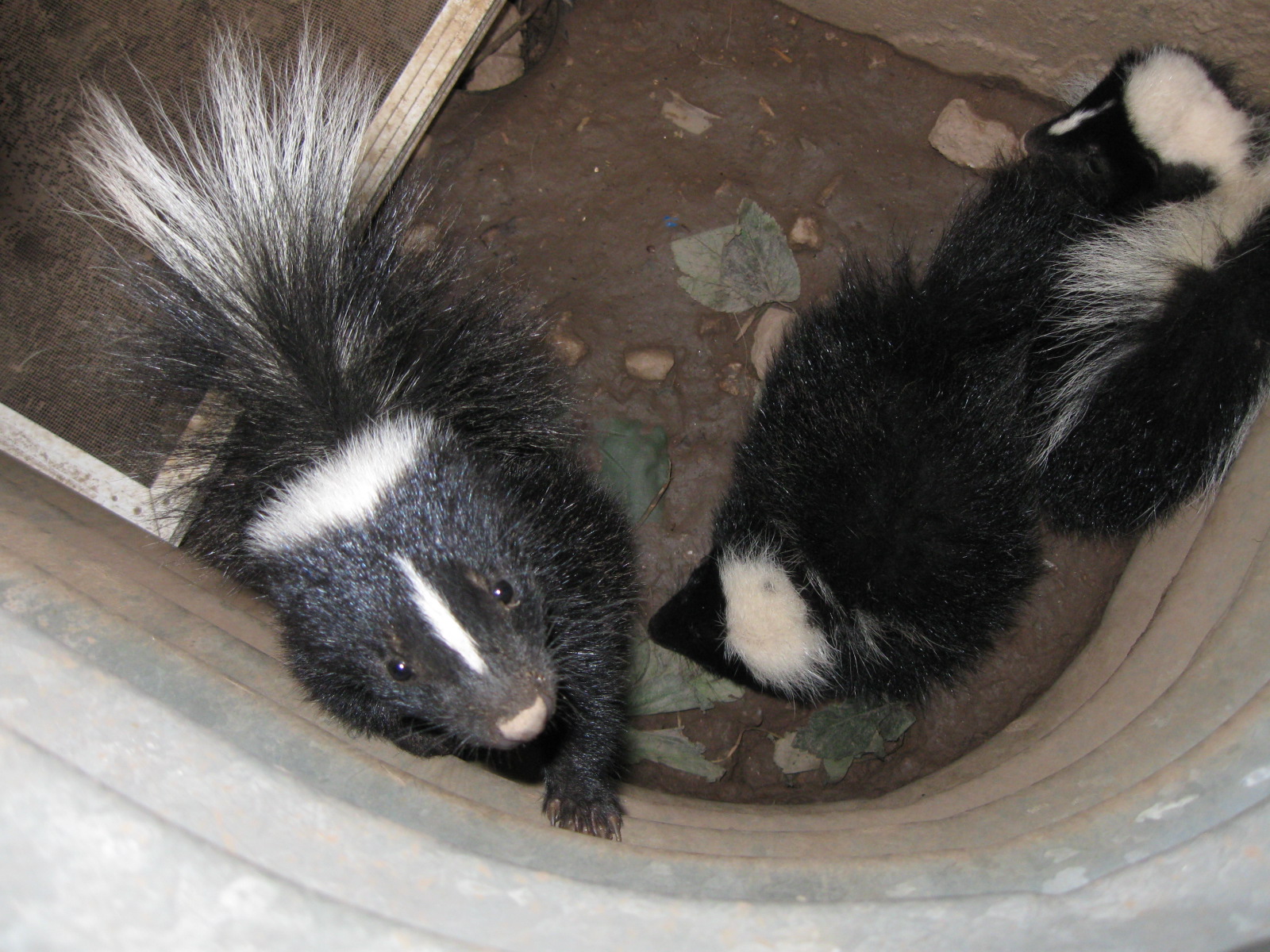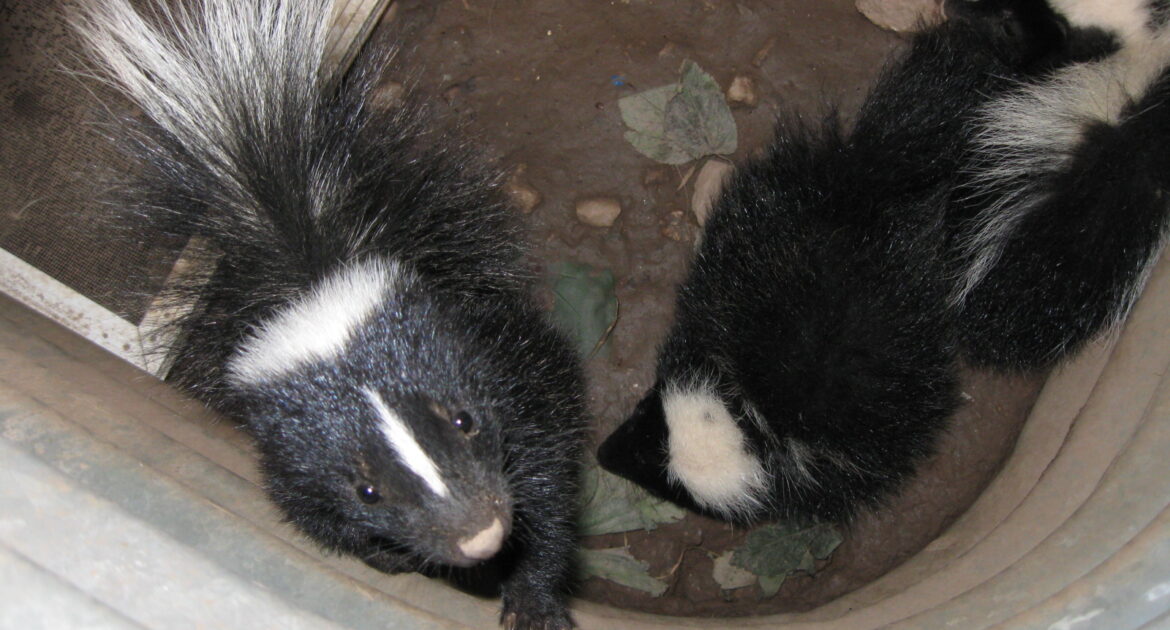Skunks get a bad rap. Many homeowners see them as a stinky nuisance, but there is far more to these black and white animals than just a bad smell. Skunks play an important role in the ecosystem. They are beneficial to farmers and gardeners because they eat a large variety of agricultural and garden pests. These omnivorous animals not only eat fruits and roots, but they also eat insects such as grasshoppers, caterpillars, wasps, and beetles, as well as a variety of insect larvae. Small mammals, like mice, voles, birds, and reptiles are also an important part of a skunk’s diet.
While this wide diet may be helpful for the skunks survival, it is also often the reason they become trapped in spaces they shouldn’t be. When looking for food, skunks could wind up inside your home. That includes being trapped in places outside of your home as well, like under decks and in window wells.
Skunks Can Be Their Own Worst Enemy
Skunks have great survival instincts in their natural environment, but unfortunately, they are not always great at navigating the risks of an urban or human-made environment and often danger lurks in the most unlikely places. As winter approaches, skunks will be looking for den sites and our homes have several attractive options, especially the crawl spaces under sheds and decks.

At Skedaddle our technicians are often asked to remove skunks from properties where they have made themselves at home by burrowing under decks, sheds, and buildings to create comfortable dens, but we are also called out to rescue skunks who have got themselves into sticky situations. According to Skedaddle’s Ryan Rainville, “Most often we find skunks get trapped in window wells. Raccoons go into them as well, but raccoons are much better climbers and are usually able to climb out on their own or with the help of a piece of wood or something like that.”
With so many potential threats out there, window wells are not the first thing that springs to mind when you think of the dangers faced by skunks living in close proximity to people. But according to experienced Skedaddle technicians, there are a number of reasons why so many skunks need to be rescued from window wells and in some cases, it is their own well-honed survival instincts that are working against them. As Ryan Rainville explains, “skunks fall into window wells because they have poor eyesight and cannot see the drop. Window wells are located along the immediate edge of the home and skunks like to walk beside houses because the house protects them against potential predators. They only have to worry about threats coming from one side rather than all sides. As they forage for food at night they can easily fall into a window well and be unable to climb out because window wells are deep and steep.”
Removing Skunks From Window Wells is Best Left to the Experts
Once the skunk is trapped in your window well it is highly unlikely that it will be able to find its own way out. If a skunk is not rescued from the window well in time, it will die there so you need to be aware of what is going on in your window wells and if you smell something foul outside your window, there may well in a skunk in trouble.
If you find a trapped skunk in or around your home, you need to call in a professional wildlife control expert to help them out or you run the risk of the skunk spraying you and your property. And that is not a pleasant experience for anyone! Being hit by a high concentration of the sulfide-laden musk produced in the skunk’s glands is a nasty experience and can cause nausea, vomiting and eye irritation. At lower concentrations skunk spray still smells terrible and is difficult to get rid of once it has permeated your property. Skunks usually have to be removed from window wells by hand and this requires patience and an awareness of skunk behaviour to ensure that they do not spray.
Spraying is a skunks most effective defensive mechanism against predators, and when attacked, threatened or frightened, an adult skunk can spray up to 25 feet. Luckily for us, they use their spray as a last resort. Skunks do not spray without warning and at Skedaddle all our technicians are trained to spot the warning signs that include stomping their feet, raising their tails and hissing or squealing.
Prevention is Better Than a Cure

Removing wildlife from your property can be time-consuming and costly, therefore it is better to prevent skunks from falling into your window wells in the first place. According to Ryan, “The best way to prevent wildlife from falling into or living inside a window well is to put a cover over the top. Covers can be purchased at hardware stores or can be installed by our technicians. Sometimes decks are built above window wells and that can make things more complicated as there is less direct access. In cases like that, we need to either remove deck boards or get below the deck to remove the skunks as opening the window from the basement and bringing skunks into the house is risky.”
Skunks Do Not Hibernate
You need to be on the lookout for skunks all year round and you need to check your window wells regularly to make sure that there are no small animals trapped in them. Throughout the year skunks are most likely to be spotted in the evenings and early mornings. While they do not hibernate, they do become less active in winter as they spend more time sleeping in their dens. Even in the dead of winter, however, skunks still need to leave their dens to forage, especially after a prolonged cold spell or if they have been snowed in for some time.
Skedaddle Humane Wildlife Control can help secure your property against skunks or safely remove any skunks that are trapped in your window well. Once the skunk has been removed, we will do a thorough inspection of your home and secure any potential entry points. We also deodorize the surrounding area to deter other skunks from being attracted to your property.




